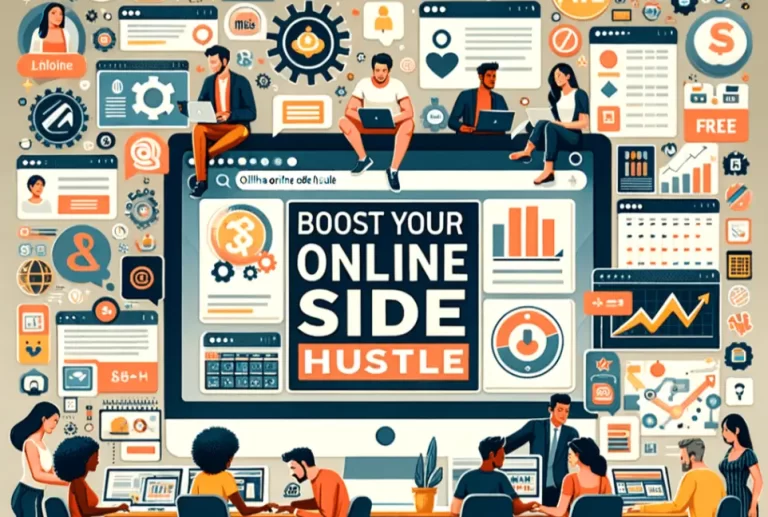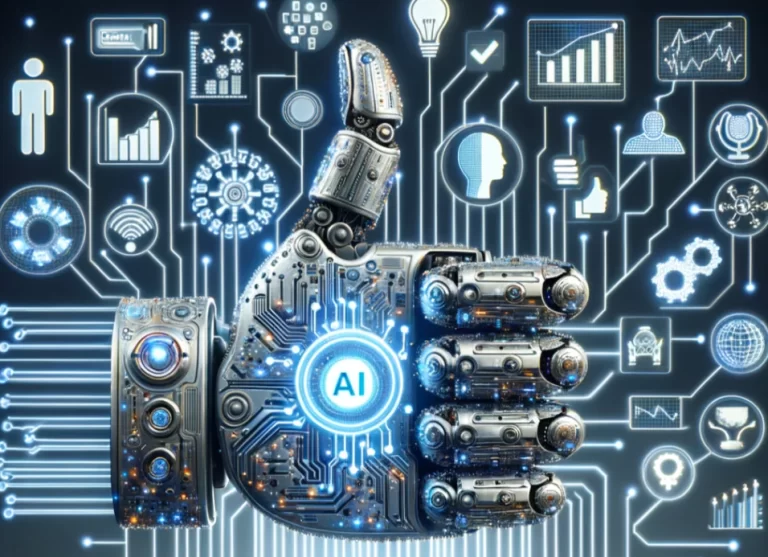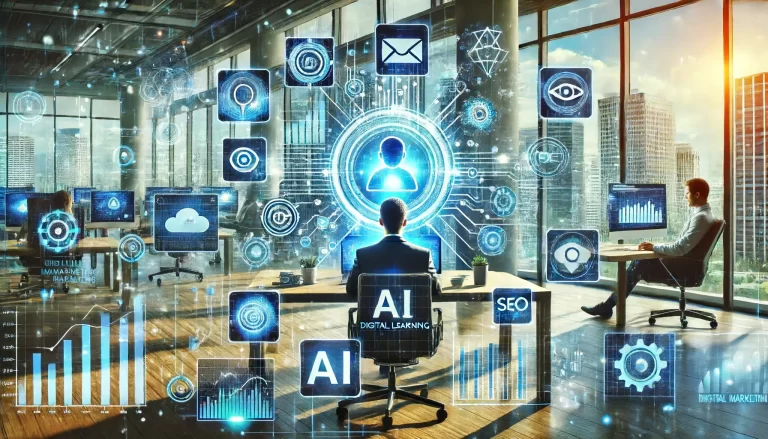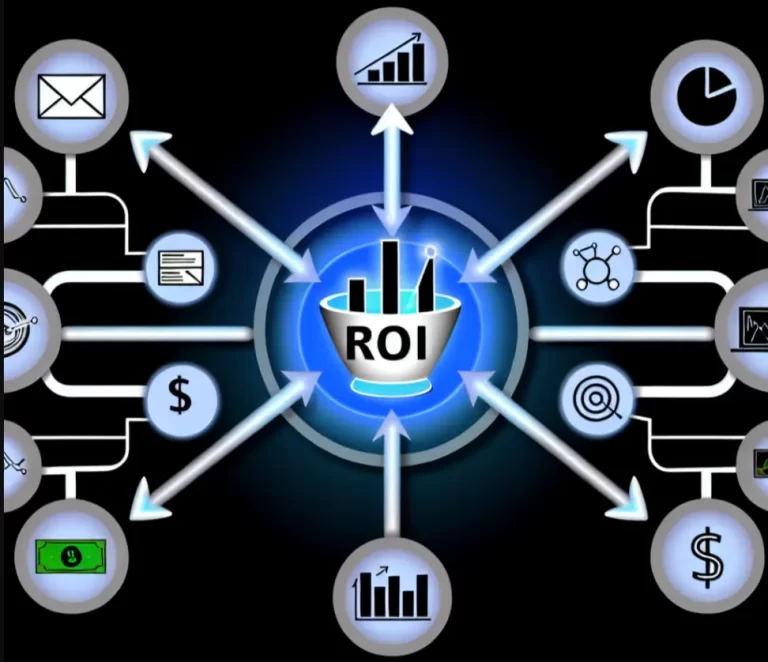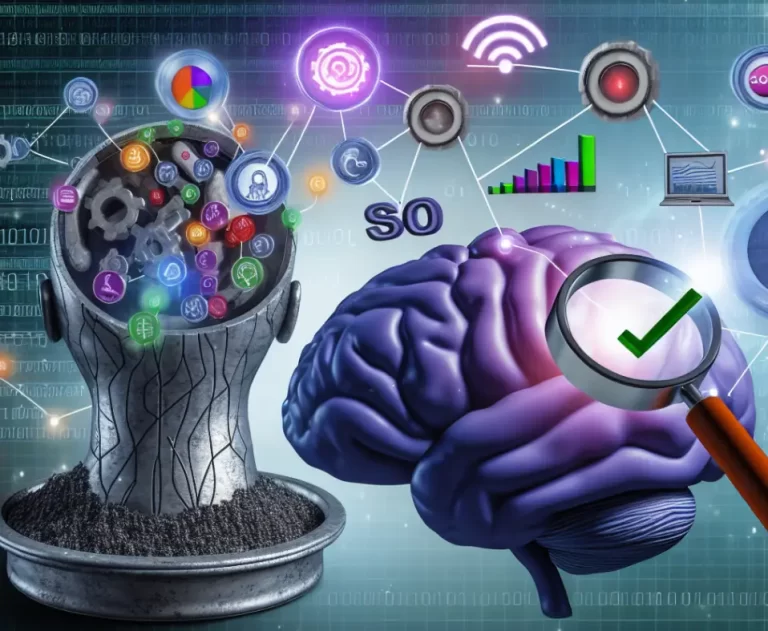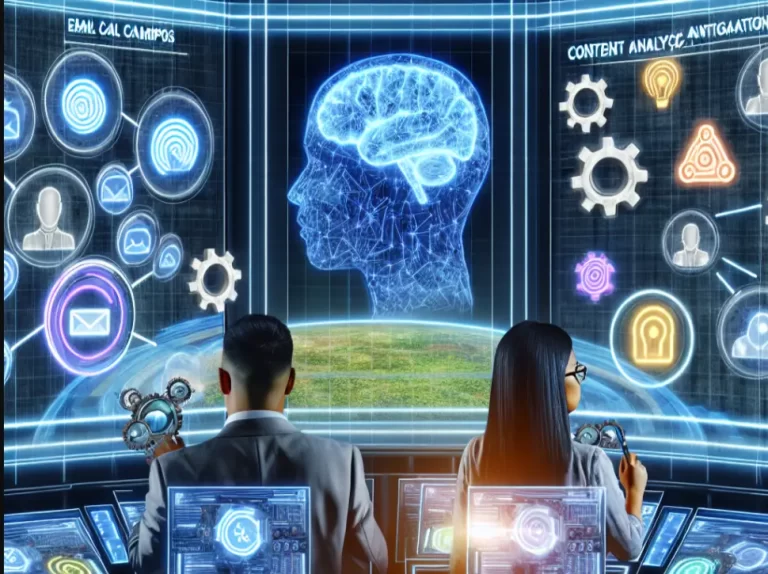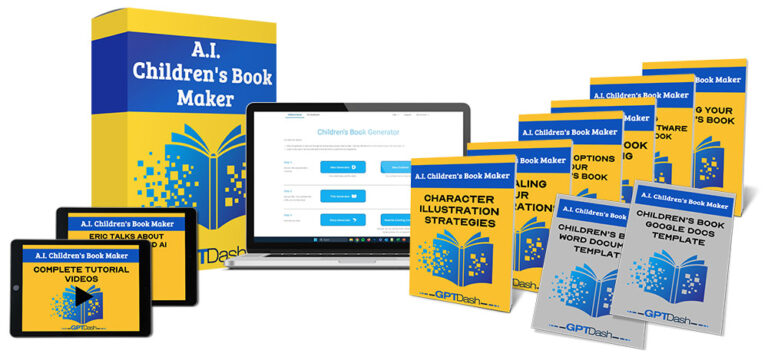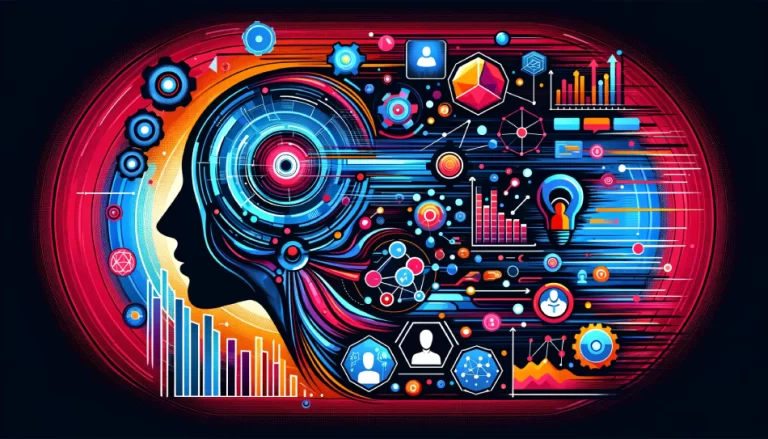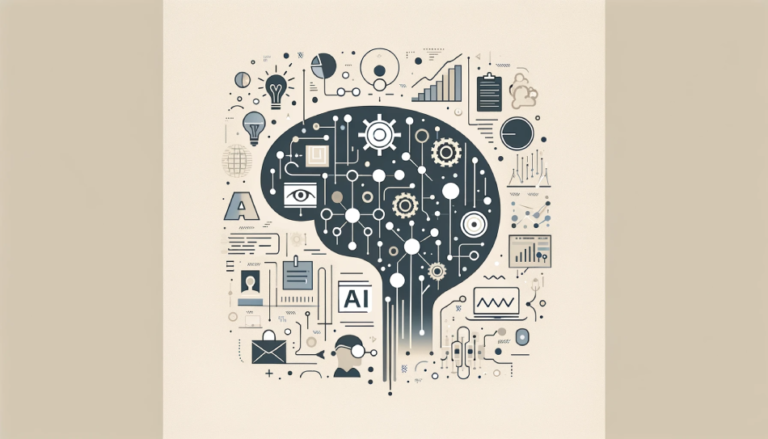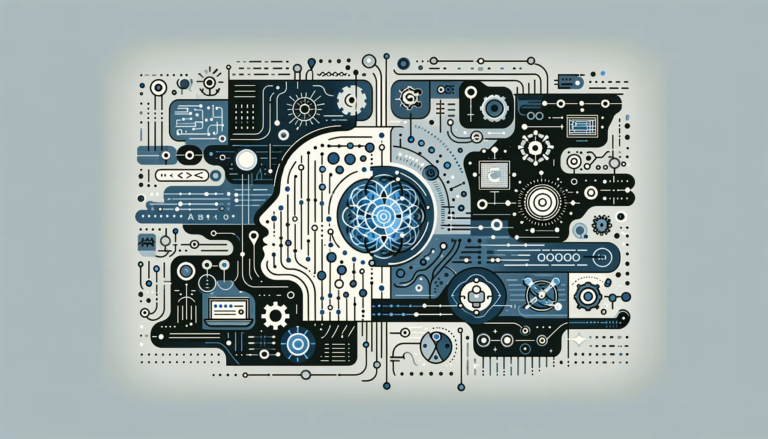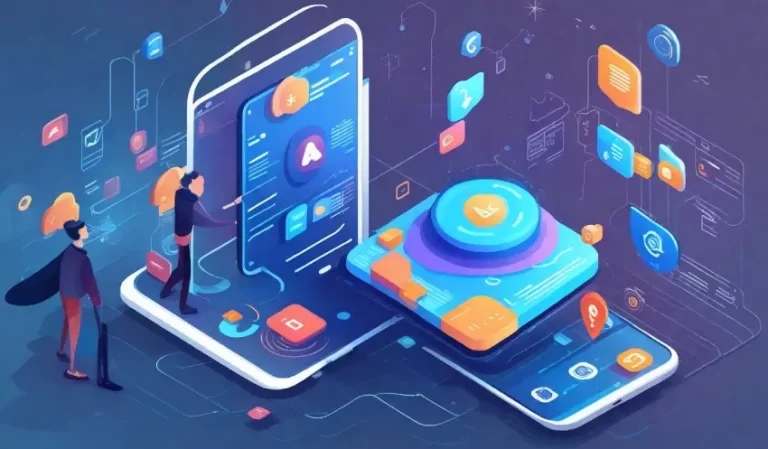AI-Driven Personalization in Digital Marketing
Have you ever wondered how some online ads seem to know exactly what you’re thinking, almost as if they can read your mind? Well, it’s not magic—it’s AI-driven personalization at work in digital marketing. Let’s dive into this fascinating world and see how it’s transforming the way businesses connect with you and me.
What’s AI-Driven Personalization?
In simple terms, AI-driven personalization uses artificial intelligence (AI) to tailor marketing messages and experiences based on individual preferences and behaviors. Imagine walking into your favorite coffee shop and the barista already knows your order—no need to say a word. That’s what AI aims to do, but on a much larger scale and in the digital realm.
Why Is It a Game-Changer?
Traditional marketing strategies often take a “one-size-fits-all” approach, which can feel impersonal and irrelevant. AI-driven personalization, however, allows marketers to:
- Understand their audience better by analyzing data like browsing history, purchase behavior, and social media interactions.
- Create tailored experiences that resonate with individual customers, improving engagement and satisfaction.
- Boost conversion rates by delivering the right message to the right person at the right time.
A Friendly Chat About Data
Okay, let’s talk about data. When we say AI analyzes data, we’re talking about a massive amount of information that algorithms sift through to find patterns and insights. But don’t worry! This doesn’t mean Big Brother is watching your every move. Reputable companies use this data responsibly and prioritize user privacy.
Have you ever noticed how Netflix suggests movies you love, or how Amazon recommends products that match your interests? That’s AI in action! By learning from your past behavior, these systems can predict what you might like next, making your online experience more enjoyable and relevant.
Getting Started with AI-Driven Personalization
If you’re a marketer wondering how to get started with AI-driven personalization, here are a few steps to consider:
- Collect Data: Gather information on customer interactions, such as website visits, purchase history, and social media engagement.
- Choose the Right Tools: Invest in AI-powered marketing tools that can analyze data and deliver personalized experiences.
- Test and Optimize: Continuously test different approaches and tweak your strategies based on performance metrics.
Wrap-Up
So, there you have it! AI-driven personalization in digital marketing is like having a super-smart assistant who knows all your likes and dislikes. It’s transforming the way businesses interact with their customers, making the experience more personal and engaging. And who doesn’t love a little extra attention, right?
Stay tuned as we explore more about this topic and how it’s shaping the future of marketing. Trust me, you won’t want to miss it!

The Evolution of Personalization in Marketing
Hey there! Have you ever wondered how personalization in marketing has come such a long way? Let’s take a trip down memory lane and see how far we’ve come from the early days of marketing to the sophisticated, AI-driven strategies we see today.
The Early Days: Simple Segmentation
Back in the day, personalization was pretty basic. Think about the early 20th century when marketers would segment their audiences into broad categories. They might use simple demographics like age, gender, or location to tailor messages slightly. It was like trying to hit a target with a blindfold on – not very precise, but it was a start!
The Rise of Database Marketing
Fast forward to the 1980s and 1990s, and we see the rise of database marketing. Businesses started collecting more detailed customer information, allowing for slightly more sophisticated segmentation. Marketers could now send different messages to different groups based on purchase history or interests. It was the beginning of a more data-driven approach.
The Internet Revolution: A Game Changer
The late 1990s and early 2000s brought the internet boom, which was a complete game changer. Suddenly, marketers had access to a treasure trove of data. They could track website visits, clicks, and online behaviors. This led to more personalized email campaigns, tailored web experiences, and the birth of digital advertising as we know it.
Social Media and Real-Time Personalization
Social media platforms exploded in the 2000s, changing the personalization game once again. Now, businesses could engage with customers in real-time, tailoring messages based on immediate interactions and feedback. Social media ads became super targeted, allowing marketers to reach specific audiences like never before.
Data-Driven Personalization: The Modern Era
In recent years, we’ve entered a new era of personalization, driven by the sheer volume and variety of data available. Modern tools and platforms enable marketers to gather detailed insights into customer preferences, behaviors, and even emotions. Personalization today isn’t just about knowing who your customers are, but understanding what they want, when they want it, and how they want it delivered.
Key Elements of Modern Personalization
- Behavioral Data: Tracking how customers interact with your brand across different touchpoints.
- Purchase History: Using past purchases to predict future preferences and needs.
- Real-Time Engagement: Responding to customer actions as they happen, creating a dynamic interaction.
- Omni-Channel Integration: Ensuring a seamless personalized experience across all channels – online and offline.
Challenges and Opportunities
Of course, with great power comes great responsibility. Modern personalization presents its own set of challenges, from data privacy concerns to the sheer complexity of managing and analyzing massive datasets. However, the opportunities far outweigh the obstacles. Businesses that master the art of personalization can build stronger customer relationships, improve loyalty, and significantly boost their bottom line.
So there you have it! The journey from simple segmentation to today’s intricate, data-driven personalization has been nothing short of revolutionary. And trust me, it’s only going to get more exciting from here.
How AI Enhances Customer Segmentation
Let’s dive into one of the coolest aspects of AI in digital marketing: customer segmentation. If you’ve ever wondered how brands seem to know exactly what you want and when you want it, the magic lies in sophisticated customer segmentation. But here’s the kicker: AI takes this to a whole new level.
From Basic to Brilliant
Traditional customer segmentation was like painting with broad strokes. Marketers grouped customers based on basic demographics like age, gender, and location. Simple, right? But also kind of… yawn. AI, however, uses advanced algorithms to analyze tons of data at lightning speed, allowing for more nuanced and effective segmentation.
For instance, AI-driven segmentation can consider a broad array of factors, such as:
- Behavioral Data: How users interact with your website, their purchase history, and even their social media activities.
- Psychographic Data: Interests, lifestyles, and values that might influence buying decisions.
- Contextual Data: The context of a user’s interaction, like time of day, device used, and current trends.
Real-Time Adaptation
One of AI’s superpowers is its ability to work in real-time. Imagine being able to adjust your marketing strategy on the fly based on fresh data. AI can crunch numbers and identify patterns faster than any human ever could. This means that as customer behaviors and preferences shift, your segments can adapt instantly.
Here’s a fun fact: AI can help predict which customers are most likely to churn and which ones are prime for upselling. How? By analyzing past behaviors and spotting early warning signs. The result? You get a proactive marketing approach that’s always a step ahead.
Hyper-Personalization
Gone are the days of one-size-fits-all marketing. AI allows for hyper-personalization, meaning each customer can receive a unique experience tailored specifically to them. By leveraging detailed segments, you can create customized email campaigns, targeted ads, and personalized product recommendations.
This level of personalization can significantly improve customer engagement and loyalty. When customers feel seen and understood, they’re more likely to return and even become brand advocates. Plus, let’s be honest, who doesn’t love feeling like the brand gets them?
Actionable Insights
AI doesn’t just create segments; it provides actionable insights. By analyzing these segments, marketers can better understand what works and what doesn’t. This data can inform everything from product development to customer service strategies.
For example, if a particular segment frequently abandons their shopping cart, AI can identify common factors and suggest interventions, like offering a limited-time discount or streamlined checkout process.
Conclusion
In a nutshell, AI supercharges customer segmentation by making it smarter, faster, and more precise. By leveraging AI, marketers can ensure their strategies are not just effective but also seamlessly aligned with customer expectations and behaviors.
So, next time you marvel at how a brand seems to read your mind, remember: it’s not magic, it’s AI-driven customer segmentation at work!
Predictive Analytics and Consumer Behavior
Have you ever wondered how some companies seem to know exactly what you want before you do? That’s the magic of predictive analytics at work! Let’s dive into how this game-changing technology is revolutionizing the way businesses understand and anticipate consumer behavior.
What is Predictive Analytics?
Predictive analytics is like having a crystal ball for your business. It uses historical data, statistical algorithms, and machine learning techniques to identify the likelihood of future outcomes. By analyzing patterns in consumer data, businesses can make informed predictions about future behavior. Cool, right?
The Power of Data
Data is the fuel that powers predictive analytics. Every interaction a consumer has with a brand, from website visits to purchase history and even social media activity, generates valuable data. But it’s not just about having a lot of data; it’s about having the right data and knowing how to use it.
Here are some key types of data that businesses analyze:
- Demographic data: Age, gender, location, income, etc.
- Behavioral data: Browsing history, past purchases, and engagement metrics.
- Psychographic data: Interests, values, and lifestyle choices.
- Transactional data: Purchase amounts, frequency, and payment methods.
How Predictive Analytics Works
Imagine you’re running an online store. By using predictive analytics, you can identify patterns in your customers’ shopping habits. For example, you might discover that certain products are more likely to be purchased together or that sales spike during specific times of the year.
With this information, you can create personalized marketing campaigns that target customers with the right products at the right time. This not only boosts sales but also enhances the customer experience by making them feel understood and valued.
Benefits of Predictive Analytics
So, what makes predictive analytics such a game-changer for businesses? Here are a few benefits:
- Increased accuracy: Predictive models can analyze vast amounts of data far more accurately than human intuition.
- Better customer insights: Understand your customers’ needs and preferences on a deeper level.
- Improved marketing strategies: Tailor your campaigns to be more relevant and effective.
- Higher ROI: By targeting the right customers with the right message, you can maximize your return on investment.
Real-World Applications
Predictive analytics isn’t just for tech giants; businesses of all sizes can benefit. Here are a few real-world applications:
- Retail: Predicting which products will be popular and optimizing inventory levels.
- Finance: Identifying potential credit risks and preventing fraud.
- Healthcare: Forecasting patient needs and improving treatment plans.
- Travel: Offering personalized travel recommendations and dynamic pricing.
Conclusion
Predictive analytics is transforming the way businesses interact with their customers. By leveraging the power of data, companies can anticipate consumer behavior and create more personalized, effective marketing strategies. Whether you’re a marketer looking to up your game or a business owner wanting to better understand your customers, predictive analytics is a tool you can’t afford to ignore.
Ready to start predicting the future? Embrace predictive analytics and watch your business thrive!
Personalizing Content and User Experience with AI
Hey there! Let’s dive into the wonderful world of AI-driven personalization and how it’s revolutionizing the way we interact with content and user experiences online. We all know that feeling when a website or app just “gets” us, right? That magical experience is often the result of some seriously smart AI working behind the scenes.
The Magic of AI in Tailoring Content
Ever notice how your favorite streaming service seems to know exactly what you want to watch next? That’s AI at work, analyzing your past choices and predicting what you might like. This goes way beyond just recommending movies or TV shows. AI can personalize almost any type of content to suit your preferences.
Why Personalization Matters
Personalized content isn’t just a nice-to-have; it’s a game-changer for user engagement. When content feels tailor-made, users are more likely to engage, make purchases, and stay loyal. Here’s why personalization is so impactful:
- Relevance: Users receive content that is relevant to their interests and needs.
- Efficiency: It saves time by surfacing the most pertinent information quickly.
- Connection: Builds a deeper connection with users by showing that you understand them.
How AI Personalizes User Experience
AI doesn’t just stop at content; it personalizes entire user experiences. Let’s break down how this happens:
1. Personalized Recommendations
AI algorithms analyze user behavior to offer personalized recommendations. Whether it’s suggesting a new product on an e-commerce site or a new article on a blog, these recommendations are designed to keep users engaged and coming back for more.
2. Dynamic Content Adjustment
Ever been on a website where the homepage seems to change based on your previous visits? That’s dynamic content adjustment, and AI plays a huge role here. It can alter website layouts, headlines, and even images to better suit individual user preferences.
3. Chatbots and Virtual Assistants
AI-powered chatbots and virtual assistants are revolutionizing customer support. They can understand and respond to individual queries, providing personalized assistance 24/7. Plus, they learn from each interaction, making them smarter and more effective over time.
Tips for Implementing AI-Driven Personalization
Thinking about leveraging AI for personalized content and user experiences? Here are some handy tips to get you started:
- Start Small: Begin with one aspect of personalization, like product recommendations, before scaling up.
- Use Quality Data: The more accurate and comprehensive your data, the better your AI will perform.
- Monitor and Adjust: Keep an eye on how users respond to personalized content and make adjustments as needed.
- Focus on Privacy: Always be transparent with users about how their data is being used and ensure robust privacy protections.
Final Thoughts
AI-driven personalization is truly transforming the digital landscape, offering a more engaging and tailored experience for users. By harnessing the power of AI, businesses can not only meet but exceed customer expectations, fostering loyalty and driving growth. So, why not give it a try and see how AI can work its magic for you?
Case Studies: Successful AI-Driven Personalization Campaigns
Ready to dive into some real-world magic? Let’s explore how some brands have nailed it with AI-driven personalization, leaving both marketers and customers equally thrilled. Get comfy because these success stories might just spark your next big idea!
1. Netflix – Tailoring Viewing Experiences
When it comes to personalization, Netflix is often the first name that pops up. Ever wondered why it always seems to know what you might enjoy watching next? That’s the power of AI at work! Netflix uses sophisticated algorithms to analyze viewing habits, preferences, and even the time of day you’re most likely to watch certain genres.
Here’s the cool part: Netflix doesn’t just recommend shows and movies. It also personalizes thumbnails based on what might catch your eye. If you’re into romantic comedies, you might see a different image than someone who prefers action-packed thrillers. This level of customization keeps users engaged and coming back for more.
2. Spotify – Crafting Your Personal Soundtrack
Spotify has revolutionized how we discover music. Remember the first time you stumbled upon the “Discover Weekly” playlist? That’s AI-driven personalization at its finest! Spotify’s algorithms analyze your listening habits, favorite genres, and even the tempo of the songs you enjoy.
But Spotify doesn’t stop there. They also use AI to create personalized playlists for different moods and activities. Whether you’re working out, relaxing, or on a road trip, Spotify has a curated mix just for you. This keeps listeners tuned in and happy, making Spotify one of the top music streaming services worldwide.
3. Amazon – The Ultimate Shopping Companion
Shopping on Amazon can feel a bit like having a personal shopper who knows exactly what you need. Their recommendation engine is a masterclass in AI-driven personalization. By analyzing your purchase history, items you’ve viewed, and even what’s trending in your area, Amazon can suggest products that you’re more likely to buy.
Amazon’s AI doesn’t just stop at recommendations. It’s also used to personalize emails, suggesting products based on your browsing history or reminding you of items you left in your cart. This kind of personalized shopping experience not only boosts sales but also enhances customer satisfaction.
4. Stitch Fix – Fashion That Fits You
Imagine receiving a box of clothes curated just for you, without stepping into a single store. That’s what Stitch Fix offers. They combine the expertise of human stylists with powerful AI algorithms to personalize fashion recommendations.
Customers start by completing a style profile, and from there, AI analyzes this data alongside your feedback on previous purchases. The result? A perfectly tailored box of clothes that matches your style, size, and preferences. This blend of human touch and AI efficiency creates a unique shopping experience that keeps customers coming back.
5. Starbucks – Your Coffee, Your Way
Starbucks has taken personalization to the next level with its mobile app. By analyzing purchase history, the time of day you usually visit, and even your favorite locations, Starbucks can offer personalized deals and recommendations.
For instance, if you regularly grab a cold brew on your way to work, the app might push a timely offer for a refreshing iced latte next. These personalized touches not only enhance the customer experience but also drive sales and loyalty.
So, there you have it! These brands have successfully integrated AI-driven personalization into their strategies, creating more engaging and satisfying experiences for their customers. Inspired yet? Who knows, your next campaign could be the next big success story!
Future Trends in AI-Driven Personalization
If you’re as excited as we are about the wonders of AI-driven personalization, you’re in for a treat. Looking ahead, the future of AI in this space is not just bright—it’s practically dazzling with possibilities. Let’s dive into some of the most exciting trends we can expect in the coming years.
1. Hyper-Personalization
Gone are the days of one-size-fits-all marketing. Hyper-personalization takes it a step further by leveraging AI to deliver highly customized experiences. Imagine your favorite brand knowing not just your name and purchase history, but also your preferences, browsing habits, and even your mood. Sounds a bit like magic, right? But with advanced algorithms and data analytics, it’s becoming a reality. So, expect marketing messages to feel more like a conversation with an old friend.
2. Real-Time Personalization
Real-time personalization is set to become the norm. Think about it: you’re browsing an online store, and suddenly the website adjusts itself based on your actions, showing you products you didn’t even know you wanted. This is all thanks to AI’s capability to process data on the fly. The future will see brands adopting this tech to deliver immediate, relevant content, making your online shopping or browsing experience more intuitive and satisfying than ever.
3. Voice and Conversational AI
Voice assistants like Alexa, Siri, and Google Assistant are just the beginning. The future holds even more sophisticated conversational AI tools that will help brands interact with customers naturally and effortlessly. These voice-activated systems will not only respond to your commands but also predict your needs and preferences, offering a new level of personalized interaction. It’s like having a personal assistant who knows you better each day!
4. Ethical AI and Data Privacy
With great power comes great responsibility. As AI continues to evolve, so will the emphasis on ethical AI practices and data privacy. Consumers are becoming more aware and concerned about how their data is used. Future trends will likely include stricter regulations and more transparent practices. Companies that prioritize these aspects will not only build trust but also lead the way in sustainable AI-driven personalization.
5. AI and Augmented Reality (AR)
AR is no longer just a sci-fi fantasy. Combining AI with AR will create immersive, personalized experiences that blur the line between the digital and physical worlds. Picture trying on clothes virtually that fit your exact measurements or seeing how furniture looks in your living room before making a purchase. These AI-powered AR experiences will become a staple in digital marketing, making interactions more engaging and tailored to individual preferences.
6. Automated Content Creation
Content creation is another exciting frontier for AI. Future AI systems will be capable of generating high-quality content tailored to individual user preferences. From personalized emails to dynamic web pages, AI will take the heavy lifting off human shoulders while ensuring content is relevant and engaging. This means marketers can focus more on strategy and creativity, while AI handles the nitty-gritty details.
So, there you have it! The future of AI-driven personalization is not just promising—it’s transformative. Stay ahead of the curve by embracing these trends and watching how they revolutionize the way we connect with consumers. Exciting times are ahead, and we can’t wait to see where this journey takes us!

